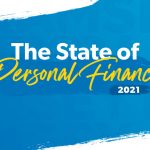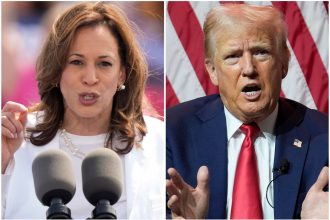Key takeaways
- If you’ve had banking issues in the past, like ongoing overdrawing of your account or writing bad checks, you may not get approved for a checking account at a new institution.
- If you’re rejected from a bank, find out why and what banks see when they pull your bank history.
- Like credit reports, bank history reports have a history of your banking records and you have access to it just like banks do.
- Even if you’re rejected from one bank, you still have other options for opening up a checking account with another bank, credit union or online financial institution.
Opening a new checking account isn’t quite as simple as bringing some cash to the bank and making a deposit.
Banks and credit unions want to learn about your financial past before establishing an account with you. They do this by running a bank history report on you. Like a credit check, this report highlights the consumer’s financial behavior, but for bank accounts instead of credit cards.
Financial institutions check to see if a past account was “closed for cause,” meaning the bank or credit union shut down the checking account because of something you did. If the report shows you have a record of mismanaging other bank accounts, the institution could refuse to open a new account.
Here’s how bank history reports work and what you should do if you’ve been denied a checking account.
Know your banking history
There are a few reasons your bank account may be closed for cause:
- You failed to pay insufficient funds fees after overdrawing your account.
- You have a history of writing bad checks to merchants.
- You’ve committed fraud.
Financial companies access your bank history data through an account verification service.
“Bank history information is voluntarily reported to database clearinghouses that serve member banks,” says John Ulzheimer, founder of CreditExpertWitness.com, which provides consumer credit litigation support.
The most well-known verification service is ChexSystems. When a potential customer applies to open a new checking account, the bank or credit union asks ChexSystems to run a search against the service’s database to see if any problems have been reported.
That bank history report might return nothing, which is what you’re hoping for. But if there is a record, it will show the name of the institution, the date the account was closed and whether any money was owed (but not how much) to the institution.
You have access to this data, too.
It’s collected under the requirements of the federal Fair Credit Reporting Act. That act allows you to request a free report once every 12 months from ChexSystems or other verification services. Ask your bank or credit union for the name of the verification service used when you apply for a checking account, Ulzheimer says.
How long do negative marks remain in your banking history?
According to the Fair Credit Reporting Act, reporting systems such as ChexSystems may not include outdated negative information on your report. Most types of negative banking history are considered outdated after seven years. Bankruptcies are the one exception, which can remain on your report for up to 10 years.
Do banks check your credit report?
While most banks and credit unions don’t check credit reports, they do technically have a right to do so. Negative account information, such as unpaid overdrafts or fraud, will likely affect your credit score as well.
If a bank checks consumers’ credit reports as part of the account application process, it will most likely give you notice that it’s going to check your credit history.
What you can do if you’re rejected for a checking account
Some banks have second-chance programs, which offer restricted account access during a probationary period, Ulzheimer says. These accounts generally have higher fees and more limitations. For example, a consumer may be able to open an account but may not be issued a debit card, he says.
A second-chance program can be a good option for people who are unable to open a traditional checking account, but it’s important to make sure the financial institution is reputable. Stick with a bank that’s insured by the Federal Deposit Insurance Corp. (FDIC) or a credit union that’s insured by the National Credit Union Administration (NCUA). You can typically qualify for a standard checking account after six to 12 months of using the second-chance account without any negative activity.
“Another option would be to open a savings account and build a relationship with the financial institution while paying back outstanding items,” says Kimberly Allen, a certified credit counselor with Baylands Family Credit Union in West Point, Virginia.
Some banks also may require customers to participate in a financial management workshop before they can open a second-chance account, she says.
To avoid banking problems in the future, always pay attention to checking account balances.
“Customers need to monitor their banking accounts and be sure to track the transactions to avoid overdraft charges and merchant fees,” Allen says.
Bottom line
Getting rejected for a checking account due to negative banking history can be difficult news, but it doesn’t mean you have to be unbanked. There are plenty of second-chance account options to explore, so you can store your deposits somewhere, demonstrate good financial behavior and get closer to approval for a standard checking account.
—Writer Dori Zinn updated this article. Margarette Burnette contributed to a previous version of this article.
Read the full article here














